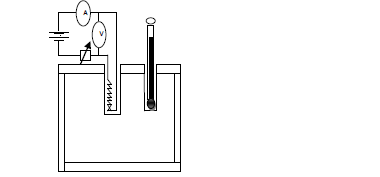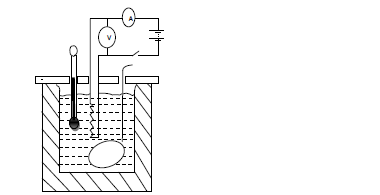a) Specific heat capacity of a solid
In this method, two holes are drilled in the solid to accommodate the heater and thermometer. The solid is heated electrically for a given time. Below is an arrangement that can be used:

In this method, the following data is recorded:
- Mass of the metal (solid)
- Heater voltage, V
- Heater current, I
- Time (duration) of heating, t
- Initial temperature of the solid
- Final temperature of the solid
The electrical energy lost by the heater is given by; E = VIt
Suppose there is no heat loss to the surroundings, then the heat lost by the heater equal heat gained the solid.
i.e. VIt = mc??
Hence c = VIt/m??
Note
Heat loss is minimized by lagging the calorimeter as well as oiling the holes.
b)Specific heat capacity of a liquid.

The heat lost by the heater equal the heat gained by the liquid and the calorimeter.
VIt = mc??l + mc??c
Hence cl = (VIt – mc??c)/m??l
sharon kalunda answered the question on
April 24, 2019 at 09:35